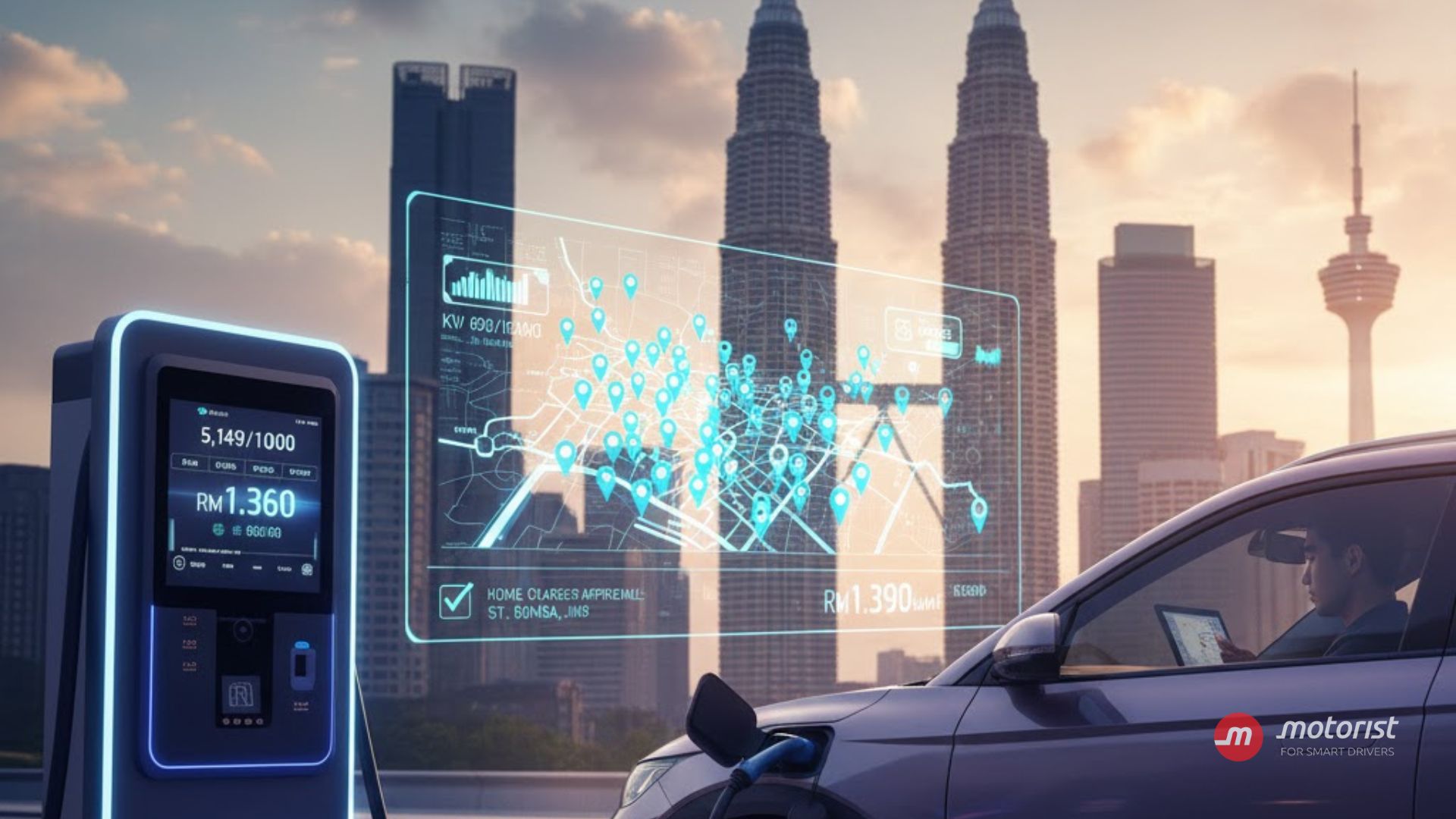The Motorist Guide on EV road tax after exemption, charging infrastructure, and installation process in Malaysia
1. Public EV Charging Stations: KL vs. Penang & the National Network
The growth of the Electric Vehicle (EV) charging network is crucial for reducing range anxiety and encouraging adoption. Malaysia is aggressively working towards its target of 10,000 public EV charging points by the end of 2025. As of late September 2025, there were over 5,149 public EV charge points nationwide.
1.1 National Progress: Hitting the 2025 Target
The focus has shifted towards the critical DC Fast Chargers, with the national count exceeding the initial 1,500 target. Providers like TNB Electron, Gentari, and JomCharge are heavily deploying fast chargers along key highways (North-South Expressway, LPT) and major urban hubs, making inter-state travel increasingly viable.
1.2 Comparison: KL Valley vs. Penang
While the Klang Valley (KL) leads in total volume and sheer density, Penang is rapidly emerging as a competitive EV hub, demonstrating a clear local government commitment.
| Feature |
KL/Klang Valley |
Penang |
| Network Density |
Highest in Malaysia, especially DC Fast Chargers near city centres (e.g., KL Eco City). | Target of 600 EVCBs by end-2025, with over 300 aimed at Penang Island. |
| Charger Deployment |
Driven by major energy providers (TNB, Gentari). | Driven by state councils (MBPP) converting existing parking bays for charging. |
| Focus | Daily urban commuting and high-traffic retail areas. | Local residents, tourism, and critical coverage for North-South Highway travellers. |
1.3 Navigating the Network: Apps and Costs
Most public chargers are operated through mobile apps. ChargeSini, JomCharge, GoTo-U (TNB Electron), and Setel/GoEV (Gentari) are essential. On average, users can expect to pay approximately RM1.09/kWh for slower AC charging and RM1.39/kWh or more for high-speed DC charging.
2. EV Road Tax Malaysia After 2025: The New Calculation
This is the most significant change affecting future EV ownership. The current EV road tax exemption is set to expire on December 31, 2025. From January 1, 2026, the new, significantly reduced road tax structure will take effect.
2.1 The End of Exemption: What Owners Must Know
The new formula, announced by the Ministry of Transport (MOT), is estimated to result in an average 85% reduction compared to the old, outdated pre-2022 rates. This aligns mass-market EV road tax costs with popular Internal Combustion Engine (ICE) and hybrid vehicles.
2.2 How the New EV Road Tax is Calculated
Unlike ICE cars (which use engine capacity in cc), the EV road tax is calculated based on the vehicle's Motor Power Output in Kilowatts (kW). The rates are tiered and progressive, with a low base rate plus an increment for every 9.999 kW increase within the bracket.
| Electric Motor Power Range (W) |
Base Road Tax (RM) |
Rate Increase Per 9,999 W (RM) |
Example Model | Est. Annual Road Tax |
| < 100,000W ( <100kW ) | RM20 | RM10 | BYD Dolphin Standard (70 kW) | RM40 |
| 100,001 - 210,000W ( 100 - 200kW) |
RM80 | RM20 | BYD Atto 3 (150 kW) | RM160 |
| 210,001 - 310,000W ( 210 - 310kW) |
RM80 | RM30 | Tesla Model 3 RWD (<208kW) | RM280 |
Action Point: Check your Vehicle Ownership Certificate (VOC/Geran) for the official "Keupayaan Enjin" (Motor Power Output) in kilowatts (kW) to use the calculation table accurately.
3. Home EV Charger Installation Malaysia: The Approval Process
Home charging is the most convenient and cost-effective method for EV owners, but the installation must be done legally and safely, following regulatory body guidelines.
3.1 Understanding Your Home's Power
Single-Phase: Typically up to 7 kW charging. Standard for most older landed homes.
Three-Phase: Required for faster charging (11 kW or 22 kW). Often necessary for premium homes or when upgrading from a single-phase supply. Upgrading requires TNB Approval.
3.2 Required Approvals and Licensing
All EV Charger installations fall under the purview of the Energy Commission (Suruhanjaya Tenaga or ST) and must comply with the Guidelines on Electric Vehicle Charging System (EVCS) (GP/ST/No. 54/2025).
Installer Requirement: The installation must be performed by a ST-registered Competent Person (a certified electrician/contractor).
For Landed/Individual Homes: The contractor will handle the necessary technical submissions to TNB regarding the increased electricity load and circuit modification.
For High-Rise (Condos/Apartments): This is complex. You must first obtain written consent from the Joint Management Body (JMB) or Management Corporation (MC) before starting any work.
3.3 Safety and Compliance Checklist
The ST guidelines prohibit the use of simple domestic sockets (Mode 1 charging). Your installation must adhere to strict safety standards:
Dedicated Circuit: The charger must be connected to a dedicated final circuit with its own protective devices.
Protective Devices: Installation must include a Residual Current Device (RCD) with a low operating current (typically< 30 mA) to protect against earth leakage.
SIRIM Certification: The charger equipment itself should be SIRIM-certified or compliant with relevant international standards (e.g., IEC 61851).
Read More: New traffic rules for Malaysia in 2026
I want to find the highest selling price for my car within 24 hours!
Download the Motorist App now. Designed by drivers for drivers, this all-in-one app lets you receive the latest traffic updates, gives you access to live traffic cameras, and helps you manage vehicle related matters.

